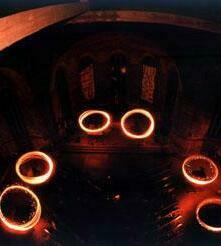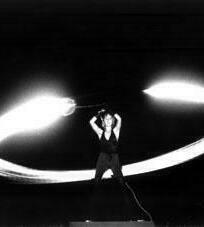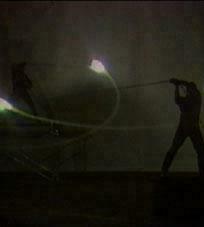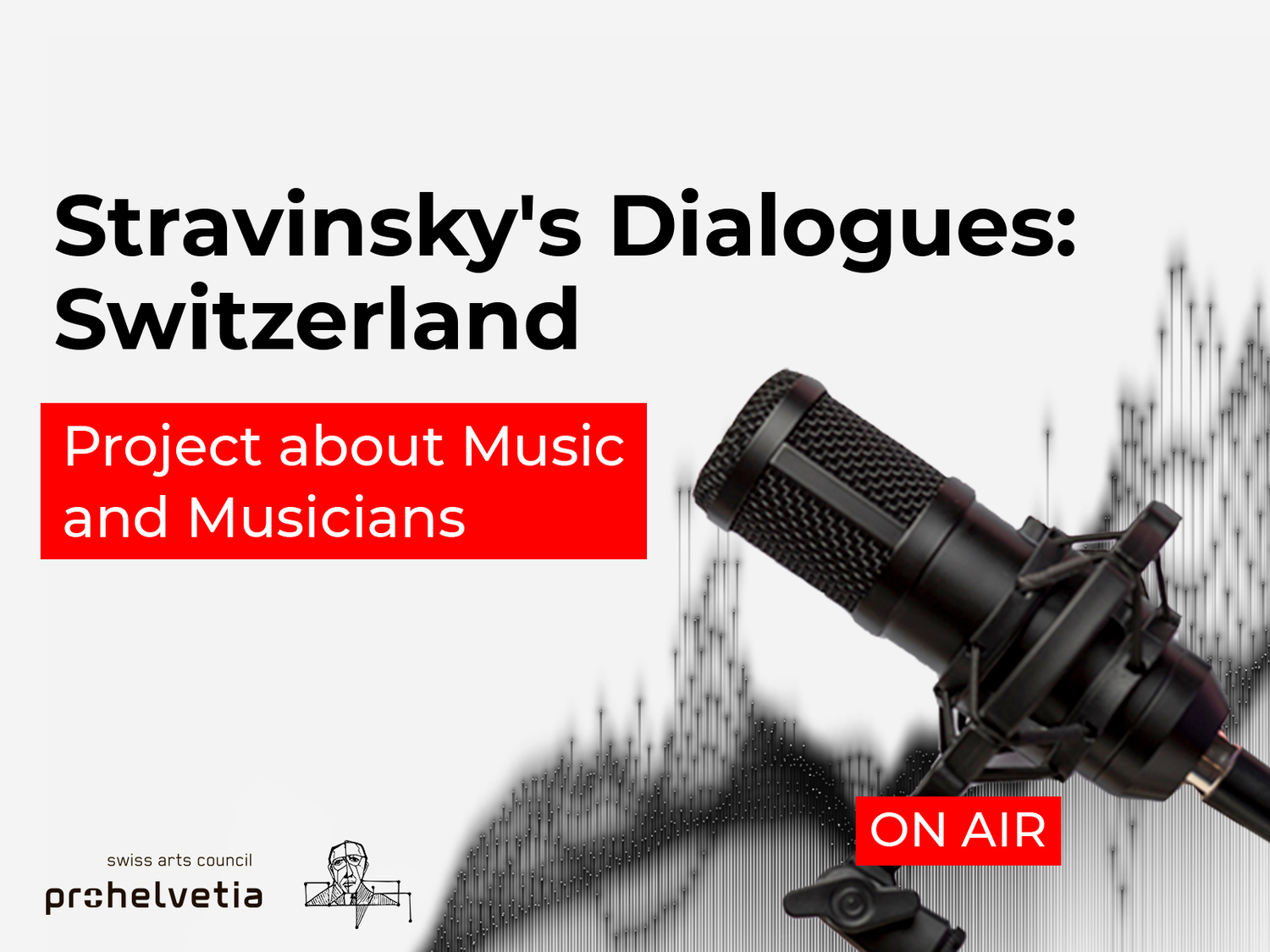

02/09/2021
Dialogue 6:
Anja Wernicke &
Zhanna Savitskaya
“Curator has to be very able to adapt to different spheres”
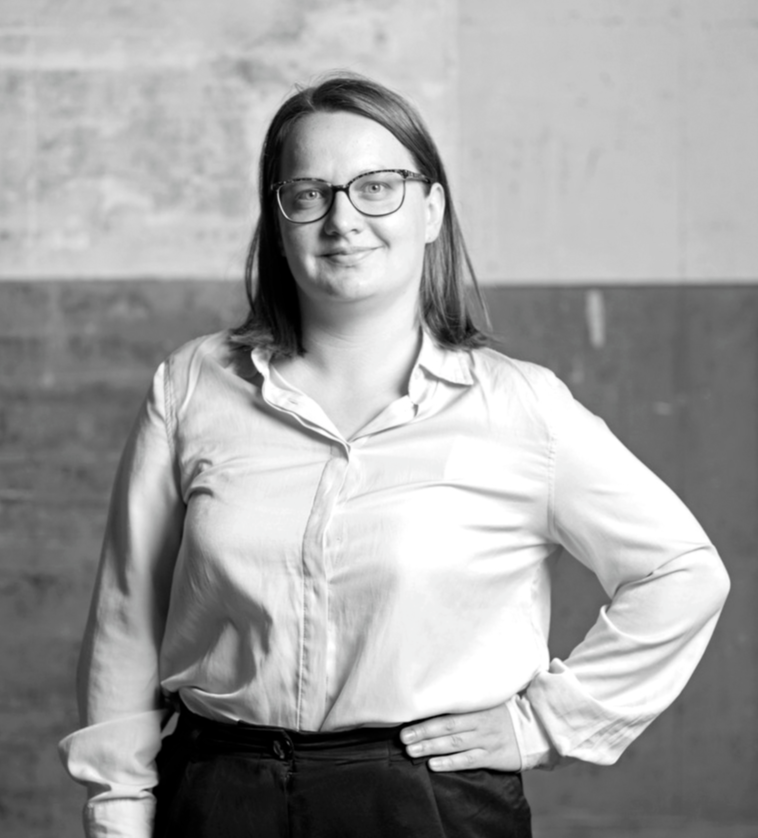
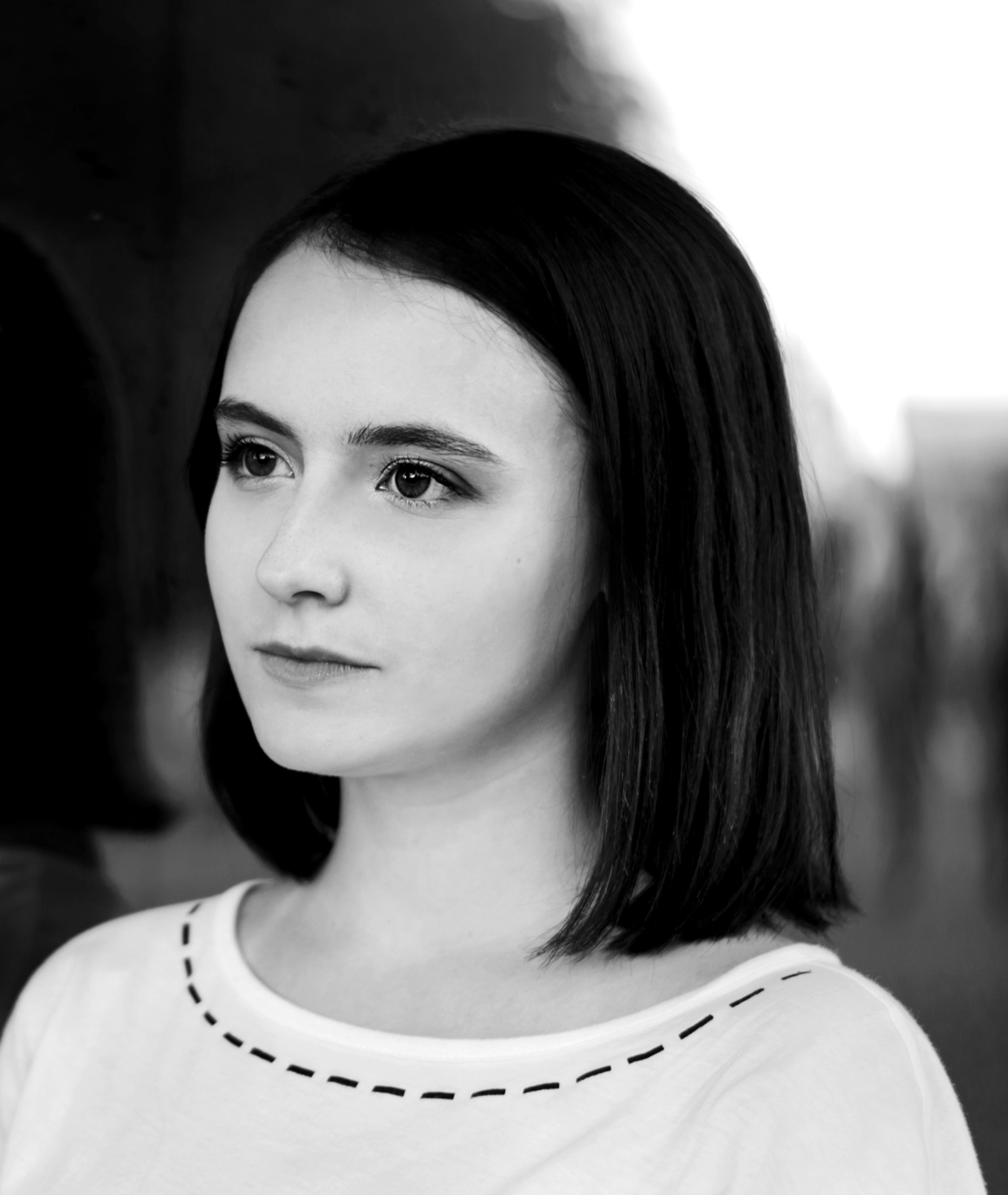
The guest of the sixth edition of "Dialogues" is Anja Wernicke, a music project manager, playwright, co-director of the ZeitRäume Basel festival. The interview is conducted by a musicologist, editor of Stravinsky.online and the Great Russian Encyclopedia Zhanna Savitskaya.
Stravinsky's Dialogues: Anja Wernicke & Janna Savitskaya
Обработка видео...
— Today we’re gonna talk with a manager of musical projects, dramaturgist and journalist Anja Wernicke. Anja, hello! I am very glad to see you.
— Hello! Thank you very much for the invitation. I’m really happy to be here. I hope that many people will get inspired and have some ideas. I’m really open also to any questions. Hello to the audience. And if you have any questions, you can write an email to me. And I would be very happy get in touch with you.
— Wonderful! Thank you very much. Anja, you work in Basel. In this city I think a lot of projects are realized connected with the contemporary art. How active is the audience? How conservative is it? How much feedback do you get from the theatre, from contemporary musical concerts?
— Yes, Basel has really a long tradition in contemporary art and contemporary music as well. There are several stories that I could tell here. Maybe I start with a conductor and somebody who was also very much involved in financing and funding new institutions. His name is Paul Sacher. He found for example the Schola Cantorum Basiliensis which is the place for old music and also the chamber orchestra which was always active in contemporary music and new music, in old music and ancient music. And he also founded Paul Sacher foundation which is known as an archive for contemporary music. This is just one, the biggest archive for contemporary music I think in the world where you have also the complete works of Stravinsky. This is a nice bridge maybe also. Yes, it is a place, a worldwide known place for contemporary music. You have this tradition.
But you also have a lot of young people. Thanks to the higher education, thanks to the music university here that really makes a very good job educating the young musicians. And many of them stay here. Then you have as I said also the other institutions like the museum which also was always very active in contemporary music. And Art Basel, of course, which is the biggest art fair. And then you have also smaller spaces which really are like the core of contemporary music scene in Basel, for example, the Gare du Nord. This is also the place… The reason why I am actually in Basel. When I came to Basel I made the internship in Gare du Nord. This is a concert place which has an annual program. And I think three or four concerts a week. A lot of contemporary music is going on there. Many different ensembles from Basel, Switzerland and also international are coming there. So, it is — from the side of the city — really has a strong contemporary music scene.
You were asking about the audience. I would say, the audience is quite special in Basel. The inhabitants of Basel are very open towards contemporary music. This is the experience that we got with the festival for example. It used to be also socially important thing to go to the concerts, for example, for Paul Sacher because he was a very prominent figure in the city. And still, it is somehow in the DNA I would say of Basel inhabitants to be very open, very curious of what’s going on on the contemporary music scene.
So, we as a festival, I am speaking for ZeitRäume Basel festival which you can see here in my back — it’s our new poster. Our concept is to do concerts in spaces where normally no concerts are happening. There we really meet a great openness. For example, we have been doing projects in the tunnel under the Rhine which is normally not open to theaudience. The city administration was so kind and so open to giving the students — it was a project with students — the possibility to realize their project. Also, when we do projects in the public space it’s always very supportive. For us, we are always amazed also that people are so open-minded and so supportive for our projects. We always try to do in places where normally no concerts are happening.
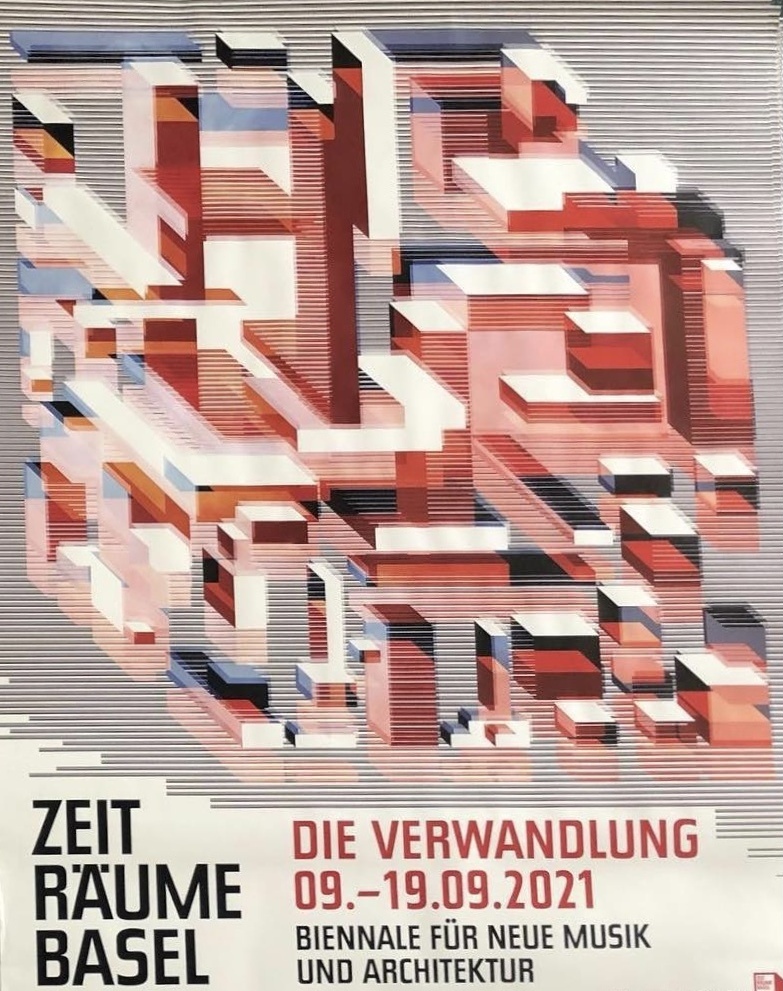
ZeitRäume Basel
— This is really very interesting! Then let's immediately talk about the Biennale of new music and architecture you are the head of. Music and architecture are often found in the same bundle, and they are often compared with each other. The idea of your biennale is a kind of syncretism of these two arts. I came to this conclusion after reading the program of the biennale and hearing your answer. In the 2021 program, I discovered some unimaginable things: for example, kinetic sound objects, an interactive sound installation with the memories of residents, the dialectical interaction of man and machine. All this sounds very interesting. But until you visit the biennale, it is impossible to understand what will happen there at all. Could you tell our listeners about what is hidden behind it and what else awaits visitors at the biennale this year?
— Sure. The basic question of the festival that we really tried to … each time and in new ways unite, give a new perspective … is the question of how music and space are interrelated, how a space is affecting the musical experience, and how music and sound are relating to the spatial experience into the architecture. So, it’s really something that has to happen in life. And this is why in the covid times we are especially happy now it looks all good. So, even the numbers are rising. We really hope that we can make this festival happen as we have planned and that people and the public dive into this experience of music and architecture. It’s really something that you cannot really transmit online or any other media. You have to experience this because the bodily experience, the spatial experience is what we are focusing on.
Then, actually, we are always looking for new perspectives, artistic ideas. Then we get surprised also by ourselves how the artists are interpreting this concept, this topic. So, this year, for example, during our time of putting the program together we realized that there were many projects, many artists who were focusing on the concept, the idea of transforming the city. You have to know that Basel is still very industrial somehow from the chemical industry. But the chemical industry has changed a lot in the last years. So, there are huge areas in the city now which are abandoned by the chemical industry but still have old factory buildings.
We have a couple of projects in those factory buildings. So, chemical industry is still strong in Basel. They just moved to other places for production. They have other buildings here now. We have big transformation area also other areas from the trains … We have at the time three or four big transformation areas where in the future new buildings, new houses will be built. Because the city, actually… when you look at the map you see that you have the German border from the one side, the French border on the other side. Basel really goes into the country where there are mountains there. The city is quite circled by borders and mountains and cannot really expand. So, the concept that the architects are mostly speaking about is to make the city denser, to use all these spaces that are abandoned by the industry, which are no longer in use, to densify these areas. This is a huge topic in Basel. Of course, it is also for us very interesting to go to this discourse, to see what kind of maybe also utopian ideas can be developed from this discourse. How are we going to use these areas?
And for example, we have one project which is called Urban Morphologies by the ensemble Mozaik. It is an ensemble from Berlin. And a Swiss composer from Zurich Katharina Rosenberger. Maybe you have also had a talk with her because she is also a curator of the festival in Zurich which is called Sonic matter. She came up with this project. She actually contacted us with this idea. I have this project about thetransformation of the city. And it’s about Berlin and Los Angeles. These two cities have already been set. And then we added the third city, Basel. This project will reflect on the past, present and future of city transformation. For example, in Berlin due to the history, it is a long story of fights in the city — how are we going to use the city. We have political social issues that also come into play. This project will be on this postindustrial area I have talked about already like these old chemical industrial buildings. This will be a special setup with video projection.
We also involved video artist Betina Kuntzsch. This is one example of how really the actual social-political questions are currently discussed in the city also have an impact in the festival. And we have other projects. For example, very different projects. Because this is a project which is more or less in a concert setting because you have an ensemble, you have a live performance, you have a video projector, the audience can move around, they can explore the space. There will be also some scenographic elements.
But then we also have another project. It is called Der klang von Birsfelden. And Birsfelden is actually a small community, it does not belong to Basel, but it is close to Basel. This is another specialty of the city. The city itself is very small. You have this agglomeration area. You don’t really notice the difference. But this little town of Birsfelden is in the south of Basel, also on the Rhein, on the river. It’s also the area which will be transformed in the upcoming years a lot. We had an interview project there. Our colleague Hanan Isabella Kohlenberger. She spoke to about twenty people. She had long interviews with them about the sound of Birsfelden. So, the question was how the sound of Birsfelden has changed. Which are spots in the city that you liked most? Which sounds would you like to have in the future? With these interviews a composer and sound artist Cathy van Eck, she will do an installation. And this installation will be made available during the festival time. It is in the public space. It will always be there. It will be an interactive sound installation where you can go, you can approach there. There are sensors. And the sound will change according to how close or distant you are from the loudspeakers. These are two very different projects which show how we are also involved in the discourse of architecture, urbanization, urban studies, and how we also tried to involve the inhabitants, creative community to have somehow the base of artistic projects coming from the local inhabitants. This project developed through the time according of what people was saying during these interviews.
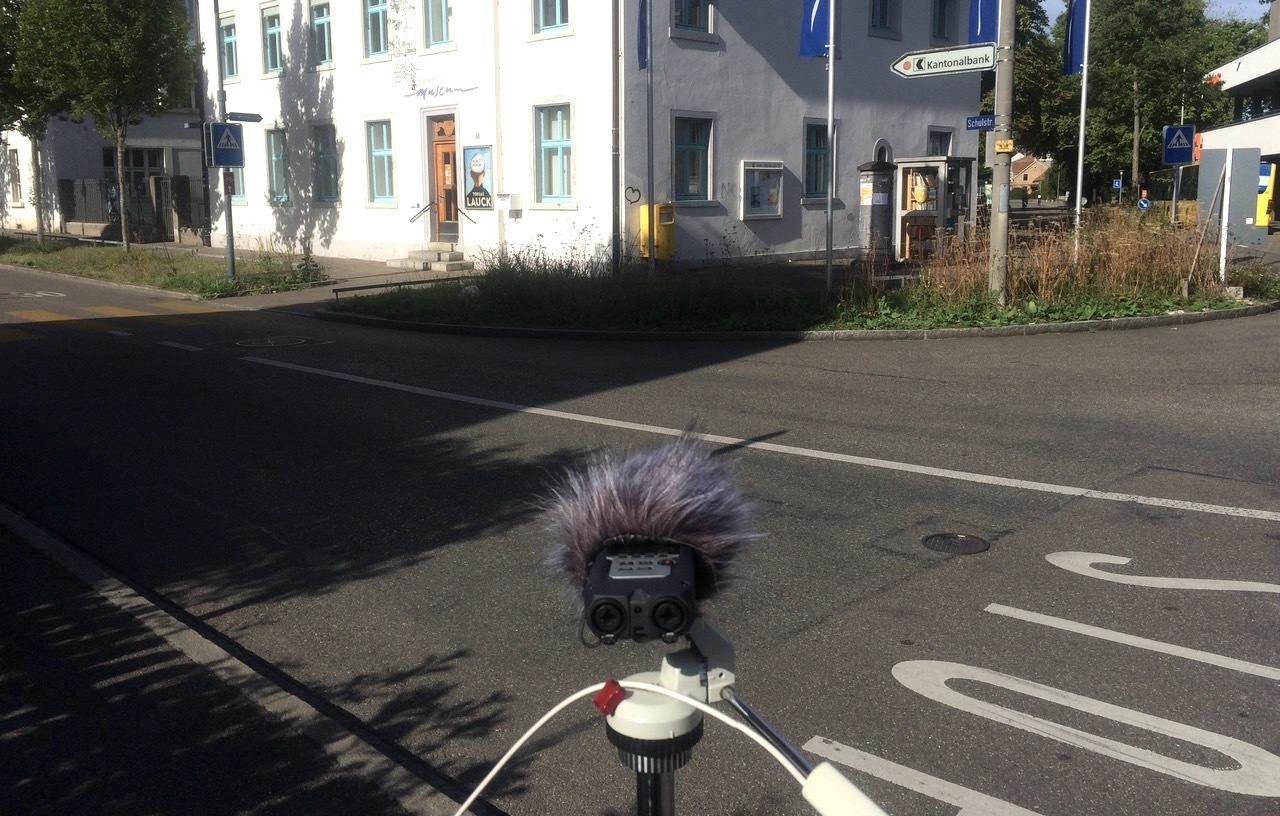
Recording in Birsfelden
— Do I understand correctly that the listener in such projects does not just get into the sound space, but gets the opportunity to control this space and his perception? In addition to the fact that he can warm up after a long working day, walk through all the locations, he can model his own perception by himself?
— Yeah. This is true. This is really something that we hope will happen many times, that people also maybe spontaneously come to our project because we have many things happening in the public space.
We have one project which is called The Zoomer. So, it’s a project with several choirs. This is also something which is really great here. There are so many choirs. And they are also very open to contemporary music. There is one big choir event also taking place during the festival which we could partner up together and during this event of this big choir event our project The Zoomer will also take place. And this project people might just come across and then experience the city which they know from day to day in their daily routines differently. This is really what will hope also to transform like … day to day places which seem common, which seem known transform them into a different aesthetic experience. Maybe transform in this case also a little bit people’s experience… the inside let’s say.
We have also a festival pavilion Mittlere Brücke at the central bridge in the city to where are different installations where earlier referring to the cybernetic projects. There will be a cybernetic installation, for example, different performances, also just a place to exchange, to get to know the festival. So, this will start also a little earlier already on September, 3rd. It will open and then go on until the end of the festival. So, this is like our base in the city because the rest of the project is decentralized. This is the place where people can get to know the festival and come across the program.
Then we also have one project in public sphere with an ensemble here from Basel. It is called the Les trombones de Bâle. There are eight trombone players. They will play the piece by Wanja Aloé which actually will be different in each spot. They will do it in five different spots. This is a good example for an artist, in this case, a composer Wanja Aloé who surprised us with the interpretation of the festival subject because he said: “It’s very nice to combine architecture and music but I would like to do it in places which are not super nice”. Normally we are looking out for special places somehow which could be architecturally very sophisticated. And he came up with the idea of doing his project, his composition composing it for places which are a little bit at the edge where normally no concerts would happen, which normally would not catch out attention. So, for example, it will be at a fitness center, or a guest station, or a family garden like a little dacha, I don’t know. In the middle of the town it’s quite common here to have a little dacha. I know in Russia a dacha is more in the countryside and here in the middle of the city people have like little gardens and it’s a place which is very private normally. And there we will do these concerts. Then also in a shopping center. So, this is an interesting interpretation of a concept. And for each space he will have different samples which evoke the space, which give a comment or give a certain reflection of this space.
— I know that in 2019 there was a very similar project Überläufer which sounds quite close to what you have just said. Could you maybe talk about this project because it was quite important and comment on this concept? How is it different from what is gonna be presented this year?
— This project came out actually of a research project that I was involved in also on the sides as I am also working at the Hochschule für Musik Basel/FHNW in the research department. There was a big research project going on with somebody from sociology, from music pedagogy about music and migration. And the question was about the music students because there are many international music students and many international musicians also in Basel living. The question was how do they actually involve here in the city life, or maybe what are their migration stories, where do they come from, where do they go after their studies, do they go back to their countries. Actually, what they discovered in this project is that you can not really speak of migrants. It’s more like a supermobility of the musicians because people who are musicians themselves or know the classical contemporary musical scene know of course that it is very international worldwide. {It’s a} mobile moving community.
Überläufer* – Eine performative Klang-Raum-Komposition (2019 UA) – 70´ (FULL LENGTH)
Обработка видео...
Überläufer
So, this was the project about the students. So many students were interviewed for this project. And then we had the idea because it was such a big topic also at this time to have a project with students where they can actually also artistically somehow comment on this topic and somehow give also their perspective in a musical way. Then there was a composer from Frankfurt am Main Hannes Seidl who was leading this project musically. Then there were also students from the Hochschule für Gestaltung und Kunst FHNW in Basel. And these students were from the scenography department, from the architecture — not the architecture from the outside but from the inside. So, I would say, scenography students. They worked together. So, the music students and scenography students worked together on the subject of migration. And then they came up actually with this concept of having of a super flexible room. So, when you see this video, there is a documentation of this project, you see that there are many things happening at the same time. You have like this open space with moving elements. So, when you as an audience member move around this space you could really experience any time some difference. Some points suddenly there could be a wall or a wall could move away. And there was also a separate room in the middle where not everybody was allowed to go inside and you had the music going on on various places. There was also one place where the audience was invited to speak about their own background, their origins where they come from. And there were questions to answer.
It was a really very nice project (Zeiträume) because it had had from one side this research background and on the other side also this performative space, this very nice scenography. What the scenography students did was really amazing — such a big work because they built it all themselves. So, this was really quite a huge setup, a huge project for us. I have to say, a very nice project.
This was not the first one that we did in this collaboration. We had one also in this tunnel that I was speaking of in 2015 during the first biennale. I really hope that we will do the other projects again together because they are so open-minded and it was a really nice cooperation.
I haven’t answered your question you were asking: how was it different form this year. I can really not say because it was just one way of approaching the festival topic and because it had this special background of the research project. There was a given theme. Maybe this is the difference. This year we have a lot of these urbanization questions, a lots of city transformation questions. The festival title actually is Die Verwandlung — the title of this year is the transformation. We also refer to ongoing and for everybody so present changing times also during the pandemic. And this experience of such a sudden quick change can happen. In 2019 the festival title was Сommon space/Shared space. So, this was referring more to the social aspects and questions about migration and how do we actually live together, how do we share the space, how do we cope with our difference, origin, and histories.
— As I understand, contemporary art tends to go beyond its own boundaries and interact with other areas. But there is an opinion that the desire to get away from the usual stage environment is because of the fear of lack of interest in the performance. Do you think this is true? Do we need new ways of perception for the music that is being written now?
— Yes, I think there are different aspects to that question. I mean, on the one side, this tendency towards transdisciplinary projects. It is not only happening in music. It’s also happening in the art world, in theater and so on. I really think it’s now just so prominent, so necessary to explore because otherwise I don’t know… You have now musical performances going on in museums. You have dance going on in museums and so on.
I think really the music world should also take part in this transdisciplinary movement and it does. It is happening. It is so omnipresent now. For the festival I think if you want to work with really contemporary artists then you can not avoid this. It is really also a big I think potential when you speak of how to reach the audiences and how to involve the audiences in new ways because as you said this tendency, this fear that the conventional sitting, concert is not enough. It is not appropriate anymore somehow. But I really think also that it is still one way of reception, one way of presenting music that should not be totally forgotten. Because it is also a beautiful way of listening to music. And having this kind of total focus, total concentration on the music and how this concert ritual as you say so often now developed in the 19th century. It was also out of the idea, a philosophical idea to totally embrace this idea of autonomous music and to forget about the body and the rest so to say — only a move towards musical experience.
I think it is a beautiful concept and it should not be forgotten. There are so many other ways of experiencing and relating to music that are also interesting. We have now the pleasure to experience this these years. I really think that still also this concentrated form of listening that we also have when you listen on your headphones to the music it should not be forgotten. And I think it won’t because it is a beautiful concept. There is also music which should be listened to in this way. I mean for our concerts we have, for example, one sitting concert also at the festival with the symphony orchestra here where special music scores will be played. But it is also really something when you can close your eyes and forget about your body and just dive into this music and sound world that is proposed. The music is not coming from the front but from 360-degree angle.
— I think it is very important that the conservative way of perceiving music is preserved and new ways of implementing ideas appear, thanks to which the listener will be able to feel himself in the space in a new way. Probably, everyone will find something new for himself, if these methods exist in parallel.
This year, the biennale will host a production of the opera "Poppea" by Michael Hersch and Stephanie Fleischmann. What, in your opinion, is the reason for such an appeal to the long-known plot, and why it may be interesting to a modern listener?
— I really think that the music of Michael Hersch and how he is treating this subject has a very I think actual possibility of connecting also it to a very actual stories. It is not done in this staging so specifically but you can really do it in your head because Nero is this kind of somebody who is abusing his power and this is something which unfortunately is still going on in our world today.
So, I think that very actual, concrete relations can be drawn to the plots and to the story. But the way he is presenting it musically is really something that is going under the skin. The music of Michael Hersch is very intense, it is very much like in your face. It’s really hard to withdraw from the emotional experience. And this is why we think how he is composing, how he is treating the instruments and the sounds is just away… I have to say we are co-leading the festival. This is the production which was very much supported by my colleague Bernhard Günther. He had invited also Michael Hersch to Vienna to the festival that he is doing there, Wien Modern Festival. For other projects already before with Michael Herschthere were big successes. He really supported this project. He will also go to Vienna afterwards. There will be three performances also in November this year. He always says that it is a masterpiece that Michael Hersch has written. I am really looking forward to hear it because the rehearsals are going on but of course now we only had only little pieces. And you can really tell that it would go on your skin. And it will be very intense experience. We are looking forward to having the whole experience in a couple of weeks.
— And what is the role of architecture in this staging?
— This was an experiment for us because we involved an architecture team in the stage design. So, the stage design is done by Heinrich Toews and Ioannis Piertzovanis, two young architects from Basel. They sat together with the stage director. And actually, they were talking about how to bring this violence on stage because there is a lot of violence in the plot. As I said the music already is so also intense. So, they were talking about how to bring this on stage. The architects they came up with an idea of nontransparent curtains. They are made of plastic bottles… I don’t want to say too much. The audience will see in the beginning. You have these beautiful curtains. And there will be a play. You will not completely be able to see through them and in the end, there will be like a big rubbish hole. So, it will also be a reflection on our behavior with environment, a sustainability discourse on how we treat our materials and the resources. So, they came up with this idea of the curtains using also this material which is of course also can be of a big discussion about why do we have to use these plastic bottles. But they really wanted to make this point and I think it will be very strong.
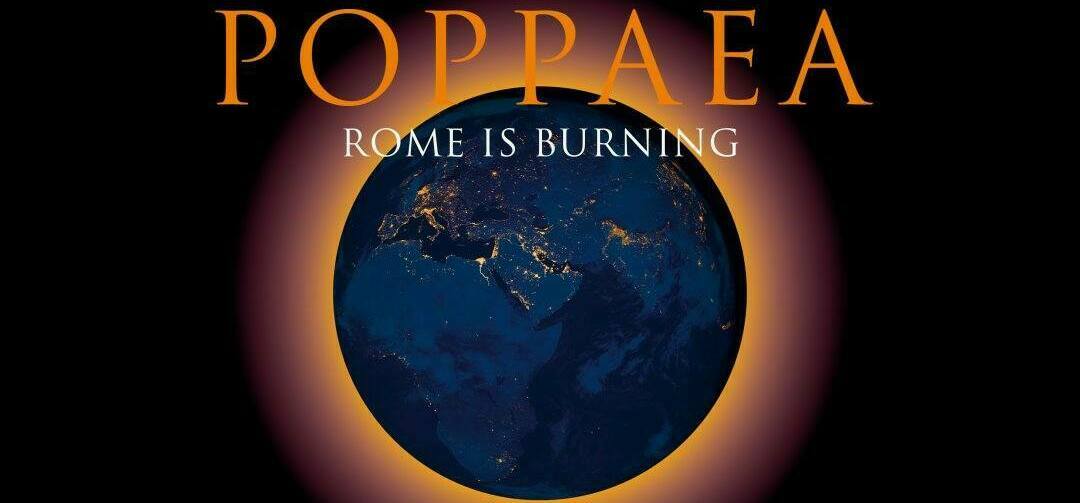
Poppaea
— I hope that this year biennale will be successful and you will overcome all the difficulties that may arise. I hope that it will be repeated in the future.
I know that the University of Applied Sciences in western and northern Switzerland has a course on curating art projects, and you are one of its teachers. This year, your students also participated in the organization of the biennale. Could you tell us what competencies should a curator have in order to successfully implement a project, and what tasks are usually set for him?
— Yes, we are having this program for the first time. This year we have a group of ten people. They are mostly musicians themselves. They are two composers, they are performers. There are also two people coming from the organizational side, from the project management, curational side. We have a very diverse group which is really nice for the discussions. And we involved them quite early.
We had three teaching blocks in January, March and May. There were different lecturers coming and doing these three course blocks. We were also always speaking about certain projects of the festival. So, we involved them very early. We were discussing different issues with them. Now they are involved in the project. For example, they will do introduction talks, somebody has written a text for the festival magazine. They came up with the ideas for the program, for the festival pavilion, for example, for the different side programs. We left this quite open. And there were quite a lot of possibilities. We have several projects where they were working on… What was the question?
— What are the skills needed?
— I was starting a little early with the whole history now the skills. I would say, the curator has to be very able to adapt to different spheres because there are very pragmatic questions, very artistic questions and somehow has to negotiate … this whole spectrum.
We are a very small team here in our festival office… We are doing everything. Yesterday my colleague we were cleaning the coffee machine. Tomorrow we will speak about what we do at the conference. Maybe I am speaking a little bit too open. But it is really for me, if you want to curate something like this you somehow to be into it from the bottom to the top. Somehow setting up such a huge festival involves so many questions on the administration side, doing the contracts, doing the whole technical stuff and then also which artist actually to choose or to pick. Somehow at the beginning, it is a question I mean because it’s a really super nice part of it engaging with the artist. But it is also a very negotiative thing. You have to be very open to the ideas also. I mean … The worst thing I think is that somehow a curator tries to impose the idea.
The work of a curator has to do with this very broad spectrum of doing very pragmatic things and also coping with the artistic ideas of the artists involved, of course. And to negotiate between the different interest groups. Especially in our case where we are cooperating with so many partner institutions and all the different venues, locations. What I really like in this curatorial discourse is the idea — it goes back to Beatrice von Bismarck — she is a researcher and a prominent figure in the curatorial discourse. She said that it is about making art public. This involves many different things. It involves also how to connect to the audience of course, we do it for the audience, then connecting with the artists and with a team, with different departments that have to be involved. I think it’s a very broad spectrum. And there are many different possibilities also where to execute the tasks of the curator. There can be people who are mostly involved in writing texts. Or there can be people who are more involved in coping, dealing with the audience directly or maybe also in education or working with the artists on the concept. Many different possibilities. And it is also more and more getting clear now actually what it all involves. But this is what I am also interested in. In my research at the university actually what all this work that is done it is not really so explicatory drawn anywhere. So, a lot of things are just happening in an implicit way. I really think it is interesting to look at what are actually the behavior and the methods that are going on while setting up a project or a festival, promoting a musical event.
— You have already talked about your research activities several times. I know that you also work at the Research Center of the Music Academy of Basel. It seems to me that if some researchers always rely on the experience of others, we will get a process closed in itself. But the center where you work declares that it is aimed at practical results. For example, using the methods of bioengineering or hydraulic engineering, the serpentino instrument will be recreated. Nowadays, few people know about it, but, nevertheless, there are musical works written for it. In this case, bioengineering has connected with music in a certain way. But what other ways can cooperation with such seemingly distant sciences be realized? Why is it necessary?
— It is quite something special and surprising also for us that these kinds of cooperation are possible. It is very much I think connected to the research financing politics in Switzerland because you have a university research which is very much working with texts, so to say not so practical – most theoretical. And then you have the applied universities. They actually have the duty to connect to the small businesses. This is, for example, how our research department is involved in so many projects where actually like real products have to come out. So, for example, like instruments or like an app that can be used afterwards. And then when you go to these small businesses, for example, like for this person who is… I don’t have the name now.
But in the Serpentine project there is one person involved who is building these serpentines. And when you come into contact with him and you listen to him. I am not so much involved in this project. I just know it from my colleagues. Then you realize what kind of problems he is actually dealing. The Serpentine project is about finding the solution for the material. In these serpentines you have I think wood and leather and to find the way that it is longer lasting. Because normally with the moisture that gets in when you play the instrument many bacteria and like mushrooms are developing in the instrument very quickly. So, the idea was to find a solution that the material is not so sensitive towards these mushrooms and bacteria. And then they connected to the institute which is doing research on the material qualities for all different kinds of things that get produced. They are actually very much involved. Their contribution to the project was to find out the way of how you can prepare the material so that it will last longer.
So, this connection from very industrial based research of the material and the musical instruments it just came into play also because of this financial structure that is looking for these kinds of connection. I hope that I described it. Because I am not so much involved in this project. As I said, me and my colleagues were also surprised: wow, it is such a great way of working together and supporting the ideas of each other. For us, always new worlds are opening.
— Yes, I understand, thank you. Basel is a multidisciplinary city in this case because music gets a chance to collaborate with very different fields of art and not art only. Apart from the city you also seem like a multidisciplinary person to me as well. I wanted to ask you about your work in dramaturgy and writing. How much of your life is connected with that? What place does it take in your life?
— The projects that I have done in this field of the dramaturgy were always linked to Gare du Nord and to the artistic director of Gare du Nord Désirée Meiser who’s also working as a stage director. And for me from very early on when I came to Basel I was involved in productions at Gare du Nord as a stage director assistant and later also as a dramaturg for Désirée Meiser. She actually always comes up with the ideas and then we are sitting together and spending lot of time together, speaking about the idea and the concepts. She mostly is working in a kind of I would call it collage technique. The first project that we were doing together — me as a dramaturg and she as a stage director — was a combination of two operas, Orfeo by Monteverdi and Luci mie traditrici (Oh My Betraying Eyes) by Sciarrino. Then the work was like we had to select certain scenes because we can not bring up on the stage both operas. It would be too long. So, our process was together: on which scenes are we focusing, on which plots, story lines are we focusing, how can we combine the music also? So, we came up with the idea of having also a moment where actually both musical worlds overlap in the scene when Orpheus is going through the hell we had like timpani is coming from the Sciarrino piece, for example. So, these are what we do together. Basically, the idea is already there from Désirée and then together we kind of build the scenes.
And for this project which will come up now in October this year, Senza Ora. It was more like ingredients of the project are more diverse. There are also different composers who wrote new pieces for it. There are several pieces by Bruno Maderna. He was like a starting point of this project. And his life inspired the project very much. There is amazing letter exchange between Bruno Maderna and his step-mother who adopted him. In these letters that they exchanged throughout the whole life of Bruno Maderna you really see his artistic path and his struggle also with artistic expression. Form the time when he was a student and he got so much applause, they called him the small Bach to later struggles, also political struggles with Luigi Nono that he had. Towards the end of his life because he passed away in the midst of his career actually. Going into more philosophical, maybe also spiritual questions — all these different questions and aspects are in these letters. So, this was the starting point of the project.
And then Désirée she has worked for so many years at Gare du Nord. There were so many different composers. So, for her the question arose in a more broader generalized sense: where does all the music go? So simply put. The music that is created and played on stage — where does it all go? So, we had several interviews with over forty different composers. Together there were students from the musicology department. There will be a little publication coming out with statements of these composers where they reflected on this question basically how and why do they compose and how do they work.
It is also the 20th anniversary next season of Gare du Nord. So, these projects really also a moment in the context of this anniversary to reflect on the history of Gardino and also composer’s role in society in general. So, this was our work in this project. It is not so much writing. It is more actually discussing and finding out which path to take and then of course there can also be a written text but it is something that comes in the end or in the middle naturally just putting down the ideas at some point. Going through this process together and being a kind of a feedback person for Désirée who will do also the staging of this project.
171116_GdN_Lamento_Trailer
Обработка видео...
Lamento
— It was very interesting to hear about the October project. Do you have any other joint projects with Désirée or maybe you are collaborating with somebody else? Or you have any future collaboration plans or ideas in this field upcoming?
— I don’t know. Now I am so focused on the festival which is starting soon. I am also working together with my husband. He is a composer as well. His name is Aleksander Gabrys. And he is developing the music theater now which is based on the play by the Polish author Stanisław Witkiewicz. It is called The Beelzebub Sonata. Beelzebub is a different name for the devil. It is a Faust drama, very very popular story which is also evoked in Stravinsky’s history of the soldier. He is working on this very very intensely. I am close to the process. I am also throwing the ideas. Somehow we are working on this together. It had to be postponed. The premiere should have been this year in April. But due to corona it had to be postponed next year, April. I am looking forward to have more time for this after the festival. And I think it will be pretty wild and cool performance happening at Gare du Nord. So, this is some other project that is always present in my life.
— Wonderful. And I really really hope that the project works out well as the festival. And nothing could be an obstacle for that. On one side you are moderating super-contemporary projects that are created from the scratch – like in front of you. Lamento or Poppaea they are bringing us back to the baroque art but from a different point of view. Also, I read your written feedback (articles) on baroque orchestra La Cetra performances as a journalist. What is the reason for such broad interests you have? Form one side you have a super-contemporary music, then you write about the baroque music. What is the reason for going back to the old music, ancient music?
— I would say, my main focus is contemporary music. I was educated as an accordion player. And when you play accordion and you want to play original pieces for the instruments you very quickly arrive at contemporary music. And I was very lucky that my teacher at the music school was also a conductor of the orchestras in which I played, accordion orchestras. They were all very much into contemporary music and a kind of leading me towards it. And I found it just super interesting. It’s really my thing. I am totally into contemporary music.
But I also always like writing. From already during my school time somehow I was doing an internship in the newspaper. And after my studies I also did an internship in the newspaper. I always liked also the journalistic media activity. When I was in Basel for 5 years I worked also here as a freelance journalist for the local newspaper. And it just sent me to other concerts so this was not really possible to say no. Only going to contemporary concerts also I didn’t want it. I was really curious. I had the possibility once to go to Milano and there was an opera by Puccini. I got to all the soloist classical concerts and orchestra concerts. I was just very curious. I mean it is the basis of the music. You have to know also this repertoire. And it’s super beautiful. And I really liked it. But I am not an expert in old music… When I get corrected on new teachings from people from the Schola. They are real experts in this field. This is I would say just were more general descriptions that I gave for this local newspaper. It’s not really my expertise.
— The question is about the interpretation of something. For example, you have a traditional interpretation of let’s say of an opera. On another side, you have a contemporary interpretation of something. Of Poppeae as an example which has been already mentioned. So, where are you in this question?
— You mean between traditional or contemporary interpretation?
— It’s about an approach to old music. Coming back to authenticity in performing or a contemporary way of interpreting it.
— I guess I have an answer to this or a comment. In this project, Senza Oro, I didn’t mention so far but there is also old music involved. And this was also really nice. In the prior project Lamento there were students playing in the orchestra. So, there was one part of the orchestra students from the music university playing Sciarrino, like from the contemporary department or classical department. And then there was also the Schola Cantorum like the old music department playing Monteverdi. It was great cooperation. And we are going on, continuing this cooperation also now in the Senza Oro project. There is also a small ensemble this time from the Schola involved. And there is one conductor, a cembalo player, a harpsichord player Johannes Keller. He is a lecturer also at the Schola. I really liked what he said about old music. We were having also an exchange about how do we approach the interpretation of contemporary music and old music and he said that actually his approach or the approach of the old music school here it is very experimental. So, it is as experimental as it is from contemporary music. You have just some hints. In the old music, you have some scores. So much information is actually missing on how to perform the music. They are very experimental. And this question of authenticity I think they are just raising it every time in a new way. And they are looking into the sources, they are studying the sources. And for them, it is really also like a continuous process. It is not about finding a super authentic way or method to do it because it is not possible. You cannot go back in time. You can not have a time capsule which will give you the feeling that the people had. It’s all the bodily experience also. So, we come back also to the influence of space, of a social environment and the whole performance situation that was happening, the purpose that the music had like the status that was combined to it. You can just guess from the sources what it was. You can like a historian try to come close to it and find interpretations. So, I think this makes it so interesting and so open and so lively in the end because it is not about establishing some fixed ways of doing this more like what does it tell us now today. And how can we as contemporary people react to this? It’s really not about setting up any alters or any museum like fixed frames or ideas. It’s more the idea about getting into the lively interaction with it. And I like this very much. It really for me was also like a mind-opening and mind-blowing concept.
— Thank you very much. It was very interesting to listen about the concert life of Basel and your activities in Basel. And coming to the end of our dialogue I wanted to ask how different is cultural life of Basel, how does it respond to your own interests? Can you model it now? Do you have this ability? Are you in a position of changing it to your taste maybe? How does it respond to you as a person needing something?
— I don’t know can I model it… I think really this is maybe back to the question on a creator skill. I don’t really think that we model it as creators. It is more like we bring to the forefront different tendencies that are already there. And I would say, for me as a person, I really like the cultural scene in Basel because you have maybe international things going on like the Art Basel. And you have also in theater, for example, in the State Theater itself a very high quality is happening. And then also in the off-scene. When you look at what is played in Berlin or Hamburg you see that often the groups and the plays and productions also have at some point showing in Basel. So, you are really able to grasp the idea of what is going on in these different art worlds, art fields. But then also it is very locally connected and this is also that is interesting, these are local connections.
And for me as somebody who came to Basel, I am not from Basel, it was very super nice way to connect to the city because all these different partner institutions, venues and also people taking part in the festival, choirs and orchestras, of course, the contemporary music scene itself with all the musicians and so on… But also, the groups which are not so connected maybe to the cultural arts life directly. For example, in 2015 we had a performance by Gordon Monahan who’s a sound artist from Canada. It is called Speakers Swinging. Actually, there are three persons who swing the speakers. I was working as a production manager at that time. And Bernhard (Bernhard Günther) who was that time the artistic director he came up with the idea of involving a sportsman actually from a very Swiss sport – it is called Schwingen, so like swinging… I don’t know how the word is in English… But it’s a very archaic sport. There are just two men facing each other. One has to throw the other on his back. I don’t know if you got this. But it’s a very popular sport. He involved the sportsman into the performance. I was going to the contest and I was experiencing this sport contest that I would have never gone to from my own motivation. So, it was really also nice to explore like different activities, then get in touch with different people in the city. And also the architectural scene of course which is also nothing would be like probably that I would not have been involved in the festival. I don’t know if I would have ever been so interested in architecture and now it’s really also for me very enriching to get to this architectural scene.
— About Basel I understand. What about contemporary music in the other cities? How is it perceived? For example, very recently Pascal Viglino gave the interview here as well. And he said that in general in Switzerland theaters are not very interested in contemporary music. Does Basel in this case have this monopoly? Do you agree with this idea? Or maybe you could comment on the situation in general in the country.
— I don’t know. In Basel you have also Mozart. And you have also of course the traditional opera repertoire which is played. But you also have Luigi Nono, you have also Stockhausen. But in Zurich as well. For example, at the opera house in Zurich… it is true that maybe a little less in Bern… but also there was Xavier Zuber, an opera dramaturg who was also bringing contemporary projects on stage. I would not be able to generalize it in this way. Certainly, the opera house is very special in Basel. It was awarded a couple of times as the opera house of the year by the Opera magazine. And they really have brilliant productions. But also, in Zurich you can see really interesting and also rare productions. It’s difficult to get there a ticket because everybody is coming from far to see it. It was a case with Bernd Alois Zimmermann opera, The Soldiers, a couple of years ago... Just a little bit more expensive than in the Basel opera, I think.
— Thank you very much for the dialogue, for the talk. I really hope that your projects will be all realized in the future. That we are wishing you all the luck in the world. Thank you very much for taking the time to talk to us today.
— Thank you. It was really nice. And as I said in the beginning I would be very happy to have any questions or comments of people reaching out. I am really very interested also in Russian art scene. Recently I had a pleasure to be a coach of a composer Olga Bochikhinafrom Moscow. She spent a residence here. It was to get in touch with her. If there are any ideas, propositions by the musicians from Russia I would be very happy to get into contact.
— Thank you very very much. I hope to see you in Russia on the festivals that you have in Switzerland as well. Thank you very much.
— Thank you!
